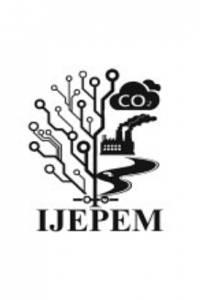Trends of Air Pollutants in Colombo City and Relationship with Meteorological Variables
Trends of Air Pollutants in Colombo City and Relationship with Meteorological Variables
Colombo, the commercial capital of Sri Lanka, has to deal with air pollutants such as Sulphur dioxide (SO2), Nitrogen dioxide (NO2), Particulate matter (PM2.5 and PM10). The main objective was to study the trends of NO2 and SO2 concentrations during the period 2013-2019 and predict the future air quality of Colombo by modelling the monthly time series of those pollutants. The data used in this research was secondary, obtained from the National Building Research Organization (NBRO) and the Department of Meteorology of Sri Lanka. The SO2 and NO2 exponential smoothing models fitted had R- squared values of 66.40% and 68.90% respectively. Significant correlation results were obtained between the predicted (2020-2021) and the observed values. The NO2 levels displayed a significant correlation (r = 0.86, p
Keywords:
Air Polllution, Time Series Modelling, Forecasting,
___
- [1] Manawadu, L. & Wijesekara, K.A.S.S., 2009, Understanding Air Pollution Dynamics and Exploring Reasons for Aggravation of Air Pollution in the City of Colombo Using Geo-Statistical Techniques, In Geo-Informatics for National Development, The Sixth National Symposium on Geo-Informatics: 2009; Colombo (pp. 17-32).
- [2] Seneviratne, M.S., Waduge, V.A., Hadagiripathira, L., Sanjeewani, S., Attanayake, T., Jayaratne, N. & Hopke, P.K., 2011, Characterization and source apportionment of particulate pollution in Colombo, Sri Lanka, Atmospheric pollution research, 2(2), pp.207-212.
- [3] U.S EPA, 2012, Air Quality Index (AQI), Air Quality Communication Workshop Overview, viewed 28 September 2020, from https://www.epa.gov/international-cooperation/workshop-materials-air-quality-communications-and-public-participation.
- [4] Ministry of Finance. (2020). Past budget speeches. https://www.treasury.gov.lk/budget/speeches/archive#2017.
- [5] International Finance Corporation. (2020) IFC insights: Sri Lankan Start-Up Offers a Lifeline During Crisis.https://www.ifc.org/wps/wcm/connect/news_ext_content/ifc_external_corporate_site/news+and+events/news/insights/pickme-sri-lanka.
- [6] Suppiah, R. & Yoshino, M.M., 1984, Rainfall variations of Sri Lanka Part 1: Spatial and temporal patterns, Archives for meteorology, geophysics, and bioclimatology, Series B, 34(4), pp.329-340.
- [7] Ileperuma, O.A. (2020). Review of air pollution studies in Sri Lanka. Ceylon Journal of Science, 49(3), pp.225-238.
- Yayın Aralığı: Yılda 2 Sayı
- Başlangıç: 2018
- Yayıncı: Yasin Akın AYTURAN
